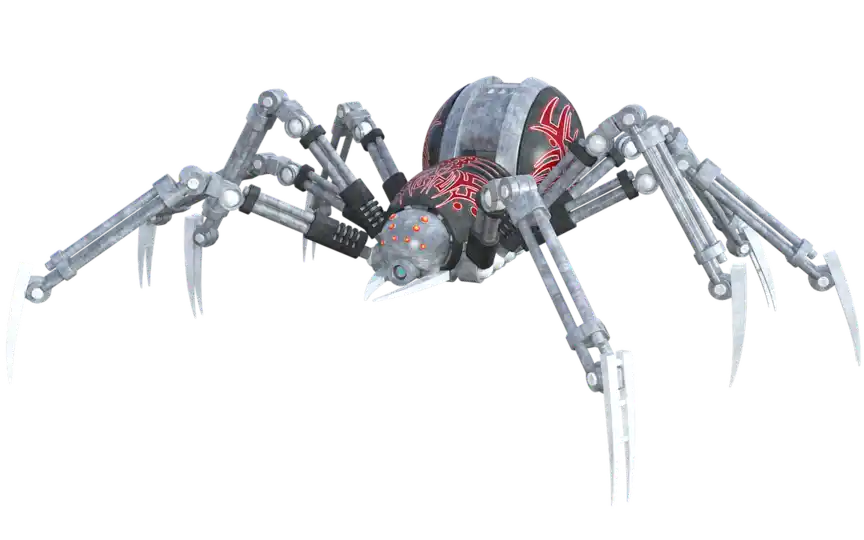2023’s tech innovations take inspiration from nature, from insect compasses to fire-fighting vines and scaly robots.
Despite the ongoing threat of human-induced climate change to our environment, nature’s influence on our technological progress remains steadfast. According to Evripidis Gkanias, a researcher from the University of Edinburgh, the solutions offered by nature have been honed over billions of years and have been consistently tested since the dawn of time.
Gkanias is particularly interested in how nature can grow artificial intelligence.
“Human creativity may be fascinating, but it cannot match the durability of nature – and engineers know that,” he told AFP.
Here’s a selection of this year’s nature-based tech, from compasses that mimic insect eyes to forest firefighting robots that behave like vines.
– Insect Compass –
Some insects—such as ants and bees—navigate visually based on the intensity and polarization of sunlight, thus using the position of the sun as a reference point.
Researchers mimicked the structure of the eye to build a compass that can estimate the sun’s position in the sky even on cloudy days.
Standard compasses rely on the Earth’s weak magnetic field to navigate, which is easily disrupted by electronics.
The light-detecting compass prototype “already works great,” said Gkanias, who led the research published in Communications Engineering.
“With the right funding, this could easily be turned into a more compact and lighter product” that is freely available, he added.
And with a little further tweaking, the insect compass could work on any planet with a large celestial light source.
– Webs that collect water –
A fabric inspired by the silky threads of a spider’s web that can collect drinking water from morning fog may soon play an important role in areas suffering from water shortages.
The artificial threads emanate from the pinniped spider, whose complex “spindle knots” allow large water droplets to move and accumulate in its web.
Once the material can be mass-produced, the harvested water can reach “a significant scale for real-world use,” Yongmei Zheng, co-author of the study published in Advanced Functional Materials, told AFP.
– Extinguishing ropes –
Animals are not the only source of inspiration from nature.
Scientists have created an inflatable robot that “grows” in the direction of light or heat in the same way that vines creep up a wall or the forest floor.
The approximately two-meter-long tubular robot can steer itself using liquid-filled bags instead of expensive electronics.
Over time, these robots could find hot spots and deliver fire extinguishers, say researchers at the University of California, Santa Barbara.
“These robots are slow, but it is suitable for fighting smoldering fires such as peat fires, which can be a significant source of carbon dioxide emissions,” co-author Charles Xiao told AFP.
But before robots can climb terrain, they need to be more heat-resistant and agile.
– Kombucha Circuits –
Researchers at the Unconventional Computing Laboratory at the University of the West of England in Bristol have found a way to use slimy kombucha mats – produced by yeast and bacteria during fermentation of the popular tea-based drink – to create ‘kombucha electronics’. .
The scientists printed electrical circuits on dried carpets that could illuminate small LED lights.
Dry kombucha mats have the same properties as textiles or even leather. But they are durable and biodegradable, and can even be submerged in water for days without being destroyed, the authors said.
“Kombucha wearables could potentially incorporate sensors and electronics into the material itself, allowing the technology to be seamlessly and unobtrusively integrated into the human body,” such as heart monitors or step trackers, lead author Andrew Adamatzky and the lab’s director told AFP.
Mats are lighter, cheaper and more flexible than plastic, but the authors warn that durability and mass production remain significant obstacles.
– scaly robots –
Pangolins resemble a cross between a pine cone and an ant cricket. Soft-bodied mammals covered in reptilian scales are known to curl up into a ball to protect themselves from predators.
According to a study published in Nature Communications, a small robot may now adapt the same model for potentially life-saving work.
It is meant to circulate through our digestive tract before opening and delivering drugs or stopping internal bleeding in hard-to-reach parts of the human body.
Lead author Ren Hao Soon of the Max Planck Institute for Intelligent Systems was watching a YouTube video when he “stumbled upon the animal and saw it just fine.”
Soon, a soft material was needed that would not damage the inside of the human body and whose advantages over hard material could, for example, conduct electricity. The pangolin’s unique structure was perfect.
The small robots are still in the early stages, but they could be manufactured for as little as 10 euros each.
“Looking to nature to solve these kinds of problems is natural,” Soon said.
“Each design part of the animal serves a specific function. It’s very stylish.”




